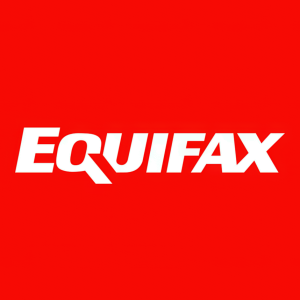Equifax National Market Pulse Data Shows U.S. Consumers Continuing to Spend, Avoiding Delinquency
Rhea-AI Summary
Equifax (NYSE:EFX) has released its Q2 2025 Market Pulse U.S. Consumer Credit Trends report, revealing total consumer debt reached $17.86 trillion in June 2025. The data shows a complex credit landscape with diverging trends across consumer segments.
Key findings include: subprime borrowers now hold 22.1% of all bankcard debt, a 3.5% increase from May 2024; student loan severe delinquency reached 17.95% in June following policy changes; bankcard balances grew to $1.07 trillion, up 4.2% year-over-year; and auto lease balances surged 13.6% while loan balances rose just 1.1%.
Overall delinquency on consumer debt remained steady at 1.5%, with bankcard delinquency showing improvement, falling 4.4% year-over-year to 2.79% in June 2025.
Positive
- Bankcard delinquency decreased 4.4% year-over-year to 2.79%
- Total bankcard write-offs decreased by 3.7 basis points compared to June 2024
- Auto lease segment shows strong performance with falling delinquencies
- Overall consumer debt delinquency remained stable at 1.5%
Negative
- Student loan severe delinquency spiked to 17.95% in June 2025
- Subprime borrowers' share of bankcard debt increased 50.9% from May 2021
- Total consumer debt increased to $17.86 trillion, showing continued leverage
- Growing K-shaped divide between prime and subprime borrowers
News Market Reaction 1 Alert
On the day this news was published, EFX declined 2.07%, reflecting a moderate negative market reaction.
Data tracked by StockTitan Argus on the day of publication.
Second Quarter 2025 Consumer Credit Trends Indicate Bank Card Delinquencies Continuing Downward Trend
"At the surface level, our second quarter data showed that consumers are continuing to spend and avoid delinquency. However, there's a growing K-shaped split in the consumer landscape, with subprime borrowers falling behind," said Tom O'Neill, Market Pulse Advisor at Equifax. "The share of credit card debt held by non-prime borrowers has now eclipsed pre-pandemic levels. In the months ahead, we'll continue to monitor whether affordability constraints continue to weigh heavily on non-prime borrowers and how this impacts the holistic credit picture."
Equifax data shows that many consumers are continuing to spend across categories and that delinquency is flat, but subprime borrowers show signs of strain. In the pandemic period, the share of total bankcard debt held by subprime borrowers declined from
Key Insights
- Student Loan Balances Sharply Decrease Year-Over-Year
In the second quarter, student loan debt represents the most acute example of credit deterioration across all major lending sectors - mortgage, auto loans, credit cards, student loans and personal loans. Due to the distribution of income tax refunds and elapsed time from the winter holidays, the second quarter is typically a period when consumers pay off debts. However, after a five-year suspension period, reporting on delinquent student loan borrowers resumed in 2025.
These policy changes have an outsized impact on the second quarter Equifax Market Pulse results. Severe delinquency – debt that is 90+ days past due or in bankruptcy – doubled in March from6.48% to13.49% , rose to18.24% in April, and stood at18.73% in May. In June, the delinquency rate on student loans in active repayment - not including loans in deferment or forbearance - fell slightly to17.95% . Overall, outstanding student loan debt dropped to$1.33 trillion 11% decrease year- over-year. The number of active accounts fell15.6% to 146.7 million. - Bankcard Delinquency and Write-offs Stabilize
Bankcard credit (traditional credit cards) balances grew to$1.07 trillion 4.2% year-over year, with total bankcard accounts up5.7% year-over-year to 581.6 million. Bankcard delinquency and write-offs have shown signs of stabilization. Delinquency fell4.4% year-over-year to2.79% in June 2025. Delinquency rates have trended downward since reaching a peak of3.22% in November 2024. Write-offs fell to 57.4 basis points in June 2025, which is 3.7 basis points lower than June 2024. - Auto Credit: Leases Soar, Loans Show Weakness
Auto loan and lease debt grew to$1.68 trillion 0.2% from May and1.7% year-over- year. Leases surged, with balances up13.6% , while auto loan balances rose just1.1% . Lease delinquencies dropped to0.42% , while loan delinquencies edged up to1.5% .
As borrowers contend with high vehicle prices and elevated interest rates, many are opting for short-term leases over long-term loans. The health of lease accounts has been strong, with falling delinquencies and lower write-offs. In contrast, auto loans appear stagnant, with marginal account and balance growth and a slight uptick in delinquencies.
Month-Over-Month Results:
Total Consumer Debt
Month | Total Consumer Debt ($T) | MoM Change (%) | YoY Change (%) |
April 2025 | 17.73 | 0.2 | 1.5 |
May 2025 | 17.80 | 0.4 | 2.1 |
June 2025 | 17.86 | 0.3 | 2.0 |
Mortgage Debt (Including Home Equity Loans)
Month | Mortgage Debt ($T) | MoM Change (%) | YoY Change (%) |
April 2025 | 13.13 | 0.3 | 3.2 |
May 2025 | 13.17 | 0.4 | 3.7 |
June 2025 | 13.21 | 0.3 | 3.0 |
Non-Mortgage Debt (Auto Loans, Bankcard and Private Label Credit Card, Student Loans and Personal Loans)
Month | Non-Mortgage Debt ($T) | MoM Change (%) | YoY Change (%) |
April 2025 | 4.61 | 0.04 | -2.8 |
May 2025 | 4.63 | 0.5 | -2.2 |
June 2025 | 4.65 | 0.4 | 0.9 |
Equifax has been tracking
ABOUT EQUIFAX INC.
At Equifax (NYSE: EFX), we believe knowledge drives progress. As a global data, analytics, and technology company, we play an essential role in the global economy by helping financial institutions, companies, employers, and government agencies make critical decisions with greater confidence. Our unique blend of differentiated data, analytics, and cloud technology drives insights to power decisions to move people forward. Headquartered in
FOR MORE INFORMATION:
Tiffany Smith for Equifax
mediainquiries@equifax.com
![]() View original content to download multimedia:https://www.prnewswire.com/news-releases/equifax-national-market-pulse-data-shows-us-consumers-continuing-to-spend-avoiding-delinquency-302516234.html
View original content to download multimedia:https://www.prnewswire.com/news-releases/equifax-national-market-pulse-data-shows-us-consumers-continuing-to-spend-avoiding-delinquency-302516234.html
SOURCE Equifax Inc.










